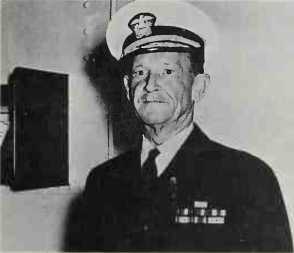Took Courcelette the same day but, as so often before, the offensive then bogged down. Morval and Lesboeufs remained in German hands for another ten days and Combles and Gueudecourt did not fall until September 26. Sir Douglas Haig, the British c-in-c, has since been accused of committing the tanks prematurely in September 1916 and of deploying them in “penny packets” instead of grouping them together for a decisive breakthrough. However, given their small numbers and mechanical unreliability in 1916, it is difficult to see what alternatives Haig had, for it is doubtful that their existence would have remained secret much longer. PJS.
Flesquieres. Village southwest of Cambrai, taken by the 51st (Highland) Division on November 21
1917, during the British Cambrai offensive. After the German counterattack of November 30, the British held a salient to the east of the village which was abandoned, somewhat belatedly, on March 23
1918, during the German “Michael” offensive. Flesquieres was recaptured by the British 3rd and Guards Divisions on September 27 1918.

Unlucky “Black Jack” Fletcher
Fletcher, Vice Adm Frank Jack
(1885-1973). US. A Medal of Honor winner at Vera Cruz, 1914, and a World-War-I veteran, “Black Jack” Fletcher proved a painstaking, but overcautious and unlucky, commander during World War II. He incurred criticism for his refuelling delay during the aborted Wake Island relief operation, December 1941, while his strategic victory in the Coral Sea, May 1942, was marred by the loss of Lexington and damage to his flagship, Yorktown, at a critical time for the US Navy’s carrier strength. Serious damage to York-town (ultimately sunk) early at Midway, June 1942, resulted in Spruance assuming tactical command. Fletcher’s subsequent reluctance to hazard his carriers was blamed for the US Navy’s reverses off Guadalcanal, August 1942: he achieved a tactical victory in the Battle of the Eastern Solomons, but after Saratoga was torpedoed, August 31, he was relegated to “commands more commensurate with his abilities” (in the disparaging words of the usn’s historian) in the North Pacific. RO’N.
Flexible Response, nato’s current strategic compromise concept accepted by the nato council after years of debate at the end of 1967 and enshrined in Military Committee Document MC14/3 of January 16 1968. The Americans, who had adopted their version of Flexible Response as national strategy from 1961, had wanted nato to accept that, in an age of nuclear parity, the only credible response to a Soviet conventional attack was a response in kind, a conventional defence. The Europeans, however, wished to maintain the nuclear emphasis in nato strategy as they doubted the deterrent efficacy of such a limited counterthreat, especially as their national territories would supply the battlefield. They also did not wish to increase defence expenditures unduly, and the 1967 compromise was only accepted on condition that it would not lead to such demands. It placed a new emphasis on conventional forces for crisis management, to defend against limited threats on the flanks and in forcing the Soviets to mount a major attack at a level that would clearly raise nuclear stakes. Various first-use and follow-on-use nuclear escalation options were subsequently worked out in the NATO Nuclear Planning Group. Over the last decade, the attempt has also been made to raise the nuclear threshold and try to defend without necessarily requiring first use. The latter option, however, remains a core element in the overall deterrent effectiveness of the concept, and nato refuses to predict beforehand precisely how its “triad” of strategic nuclear, theatre nuclear and conventional forces will be used. EJG.
Flight. Basic air force unit, usually of about eight aircraft.
Florence, Battle for (July 20-August 4 1944). 1 Parachute Corps (Schlemm) defended the city on the Paula Line some 10 miles (16km) to the south against the attacks of Xlll Corps (Kirkman). The final attack was launched by the New Zealand Division, supported on the right and left by 6th South African Armoured and 8th Indian Divisions. As Schlemm’s divisions neared exhaustion, Kesselring authorized his withdrawal to a line through the northern quarters of the city. Xlll Corps entered the southern outskirts on August 4 to find all the bridges over the River Arno blown except for the Ponte Vecchio, which was blocked by demolitions and mines at either end. Both sides tried to limit the damage to historic buildings and treasures of the city. WGFJ.
Flotilla. Literally a small fleet. A group of ships, more often small ones such as submarines or destroyers, and normally under a single command.
Flush deckers. Nickname for American destroyers built for World War 1; unusual for their type in having a continuous (“flush”) upper deck from stem to stern. The other nickname was “Four stackers” (after their funnels). Many went to the rn under “lend-lease”, others served usn in various guises in World War 11.
Flying-boat. A seaplane in which the fuselage serves as the principal buoyancy element; lateral stability on water is maintained by outboard floats or sponsons.
WEAPONS.
Flying Fortress see b-i7.
“Flying Tigers”. Nickname of the American Volunteer Group (avg): from the “shark’s teeth” painted on the noses of its P-40 Warhawks. Some 90 veteran US service pilots and 150 support personnel were recruited by Chennault early in 1941 to serve in China as mercenaries (pilots receiving $600-750 per month, with a $500 bonus for every “kill”) against the Japanese.




 World History
World History









